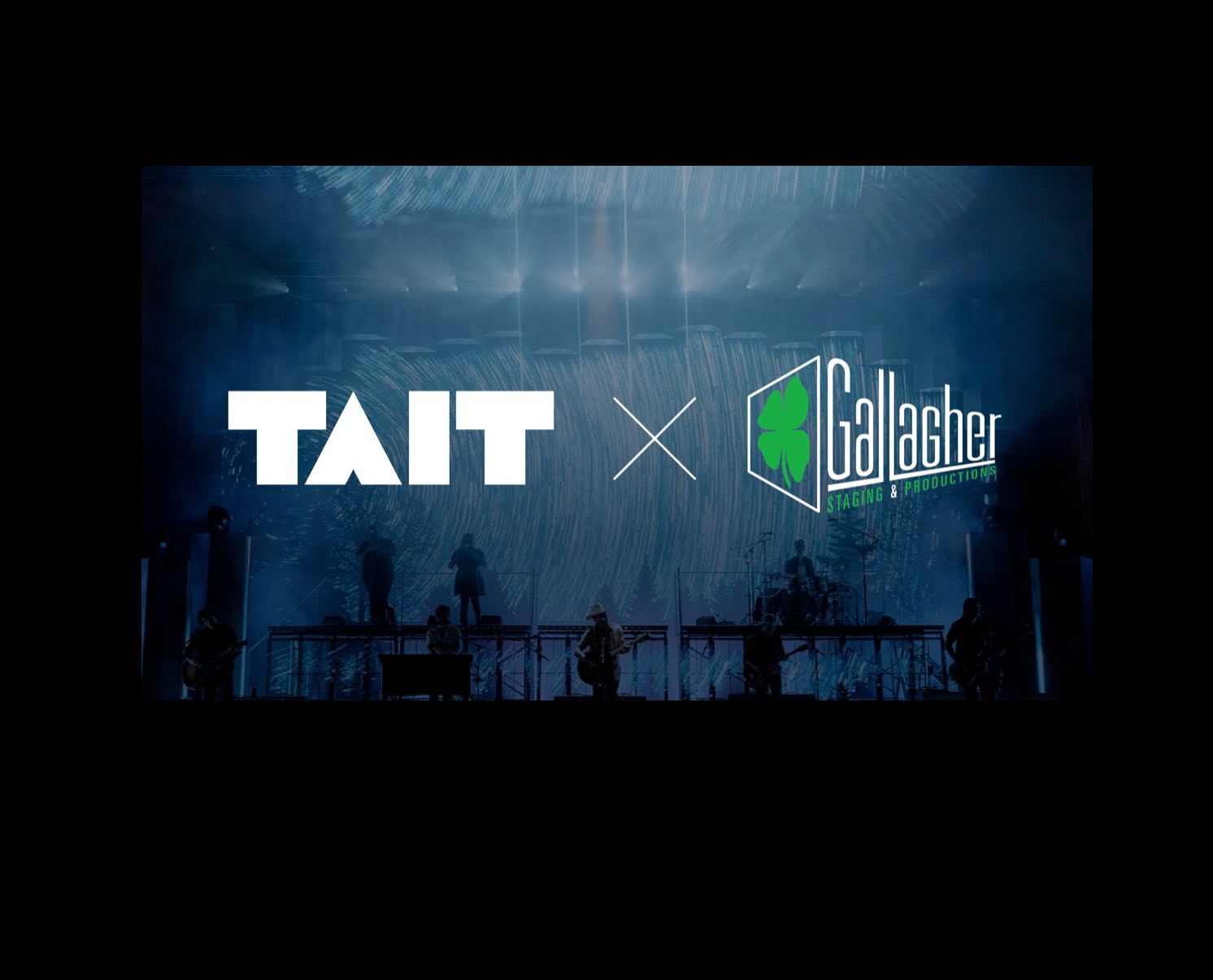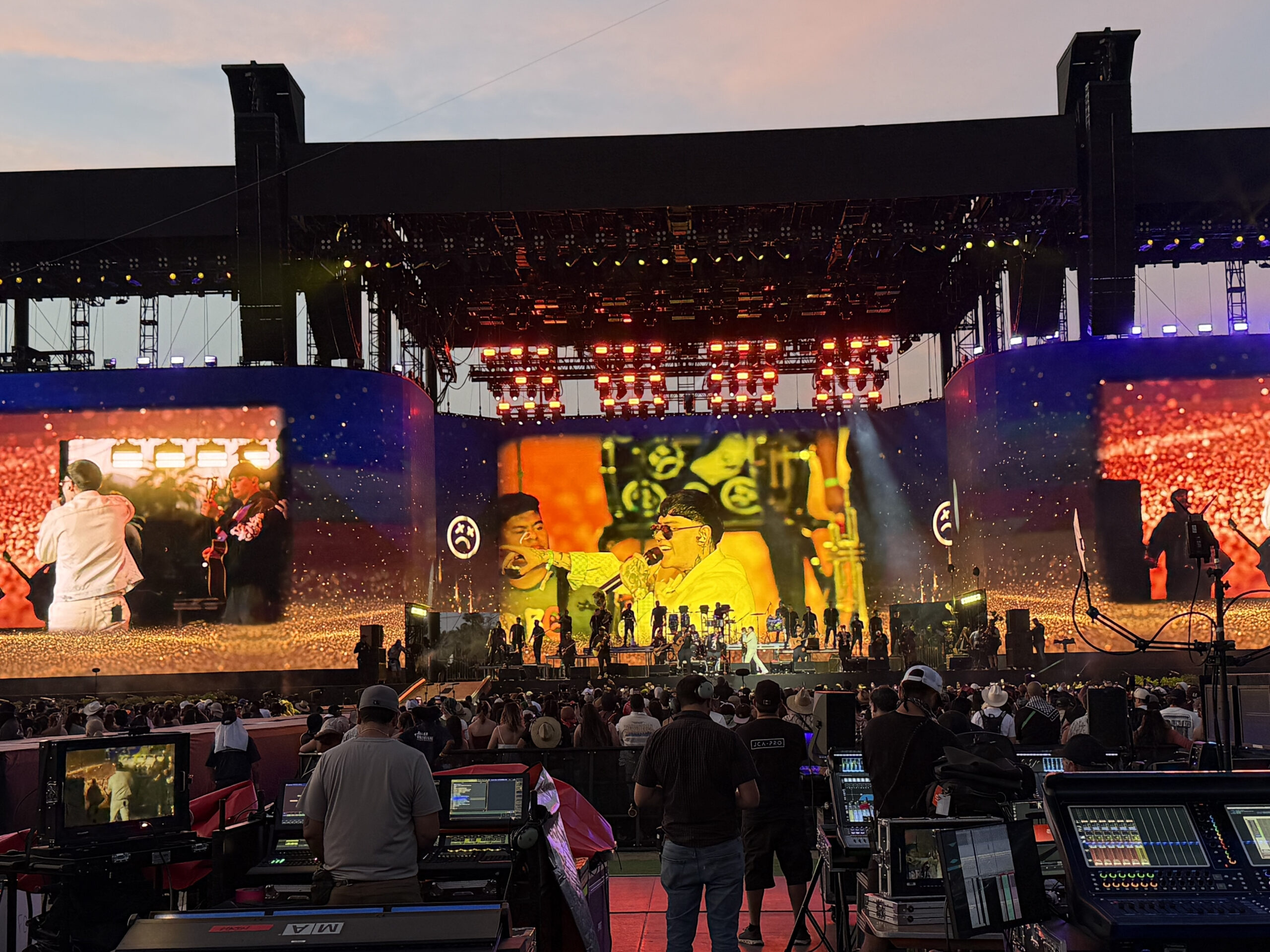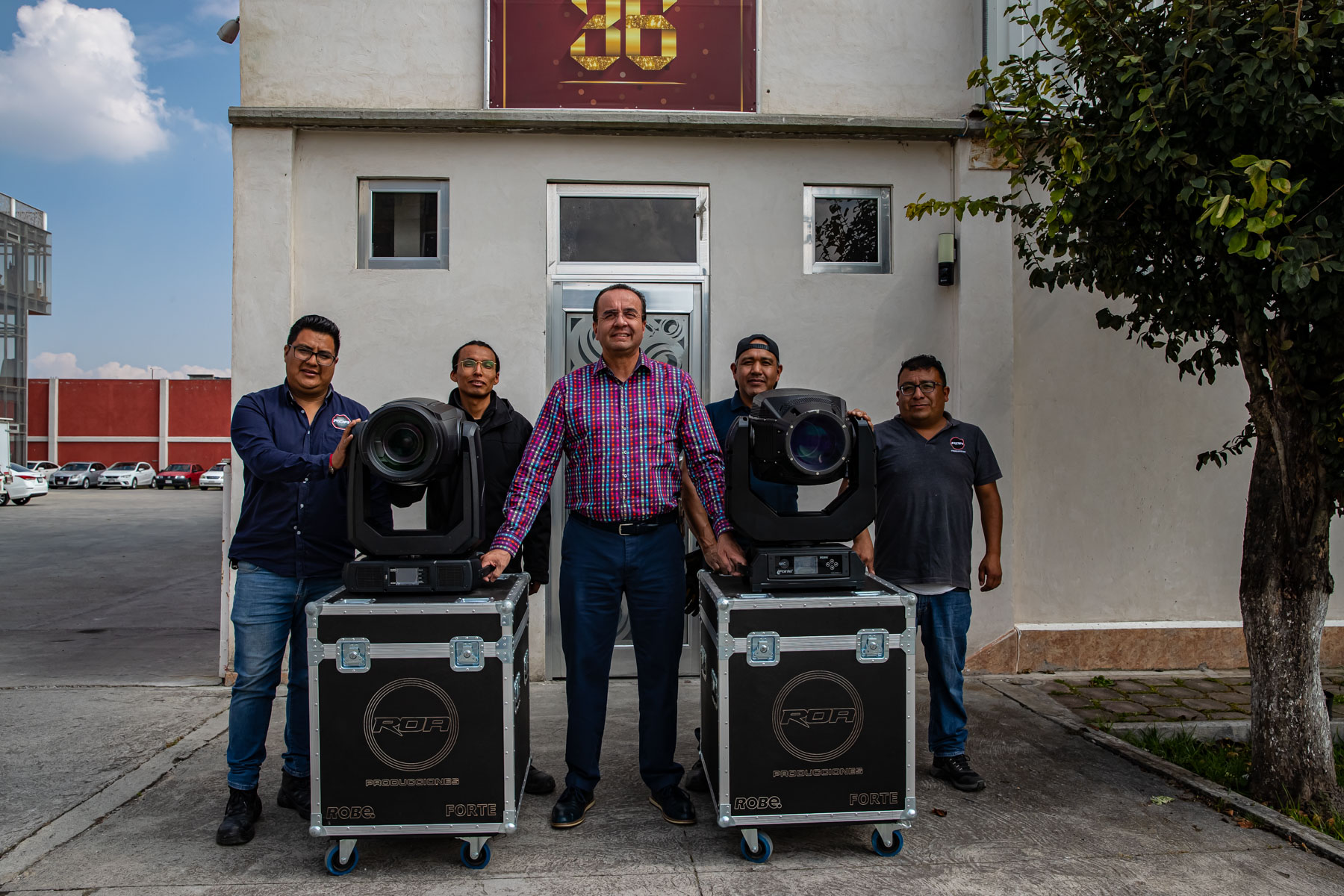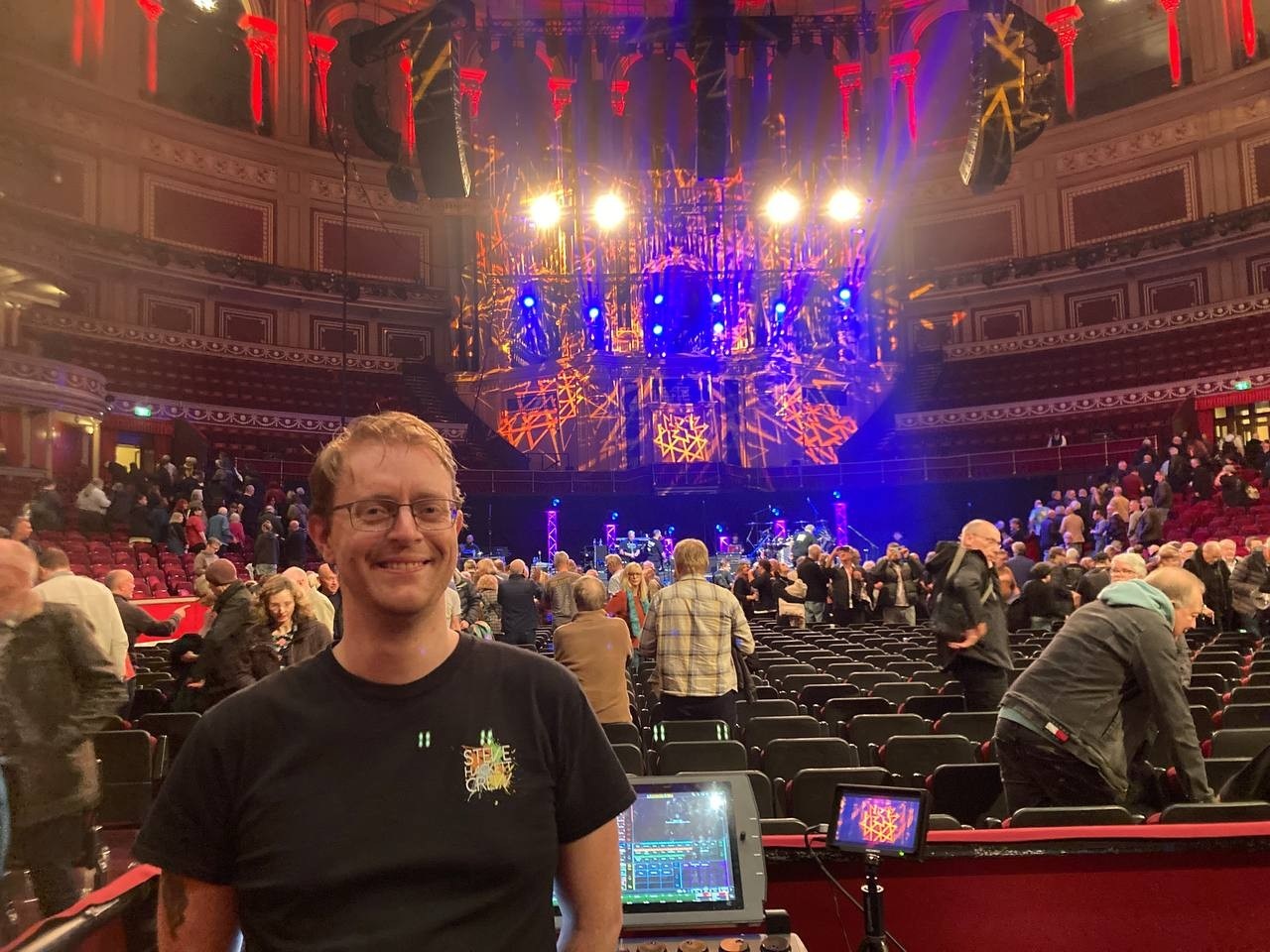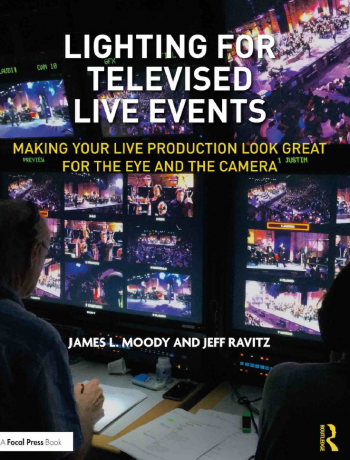
STUDIO CITY, CA — A new book about the techniques and unique issues of lighting design for live events and productions being shot for broadcast, webcast or IMAG, has been published by Routledge and their media technology division, Focal Press.
Lighting for Televised Live Events: Making Your Live Production Look Great for the Eye and the Camera unlocks the science, art, philosophies, and language of creating lighting for live entertainment and presentations that work for the television camera as well as for the live audience. The authors, Jeff Ravitz and James L. Moody, each have extensive lighting design credits in both live and televised production and have brought their experience and insights to the book in an attempt to explain the common denominators between live and televised presentation.
Lighting.
Ravitz explains, “The television camera has become an ever-present part of most productions, whether for live streams, TV specials, music videos, or, just as importantly, the IMAG screens that so many shows use. Over the years, I learned that a few, but significant, adjustments can make a live show look so much better for the viewer who watches on their TV, computer, tablet or phone. They can only see what’s being shown by the camera, and for what it’s worth, there are millions of those viewers out there. The twist is that these shows can also retain all the beauty and dynamics of the live show and still look great for the audience in the venue.”
The book explains the science, art, and aesthetics of the subject and includes production case studies contributed by respected television lighting designers who describe their methodology for adapting shows originally designed for the live audience and not the camera. Ravitz continues, “We have purposely kept the science part clear and concise to avoid bogging down the reader with technicalities that are available in numerous publications and equipment manuals. What we strive to do is connect the science to the art so we can get down to actually designing the lighting.”
The book is aimed at design students and lighting professionals in all production roles. It is available in paperback, hard cover and e-book versions from Routledge, Amazon and most online booksellers in the U.S. and U.K.
Jeff Ravitz is an Emmy-winning lighting designer who specializes in live and televised concerts, stand-up comedy, awards shows, and live productions being shot for broadcast and webcast.
www.Intensityadvisors.com
James L. Moody is considered one of the pioneers of concert lighting and transitioned to becomea much sought-after television lighting designer. After retiring from active production, he became the head of the Technical Theatre Program at Los Angeles City College, and is now fully retired.
###
CONTACT: Jeff Ravitz [email protected] 1-818-934-0789
http://routledge.pub/jameslmoodyjeffravitz
1st Edition Copyright Year 2021
Lighting for Televised Live Events
Making Your Live Production Look Great for the Eye and the Camera
By James L. Moody and Jeff Ravitz
ISBN numbers:
Hardback: 9780367256128
Paperback: 9780367256661
FOR REVIEWER OR EDUCATOR COPIES PLEASE REQUEST AT
https://m.email.taylorandfrancis.com/Review_copy_request
Book Description
Lighting for Televised Live Events unlocks the science, art, philosophies, and language of creating lighting for live entertainment and presentations that work for the television camera as well as for the live audience.
The book explores how to retain the essence and excitement of a live production while assuring that the show looks its best on-camera for the millions of viewers that can only see it on their TV, computer, tablet, or mobile phone screen. Readers will learn how to adapt an existing stage show for the camera, as well as how to design live entertainment or events specifically for TV. Filled with real-life examples and illustrations, the book covers a wide range of topics, including:
- how exposure and color work for the camera;
- how angle, visual balance, and composition can make people and backgrounds look their best, while preserving theatricality;
- information on camera equipment, screens, and projectors, as well as the control room environments that are found on a professional shoot;
- the unique challenges of lighting for the IMAG video screens used at festivals and concerts.
Lighting for Televised Live Events is aimed at lighting design students, as well as professional designers that are considering a career — or a career expansion — in television. It is an essential resource for any stage lighting designer whose show may be shot for a television special or a live webcast and who will be asked by their client to collaborate with the incoming video team.
Table of Contents
Part 1: The Science 1. Introduction: Making Your Live Production Look Great for the Eye and the Camera
2. Exposure 3. Contrast in Lighting 4. Dynamic Range 5. Balance 6. Color and Color Temperature
Part 2: The Art 7. Angle 8. Composition 9. Depth of Field 10. Aesthetics: Style and Taste
Part 3: The Equipment 11. Contrast Ratios of Displays 12. Digital Cameras and Projectors, Projection Screens and LED Tiles
Part 4: The Production Adapting the Live Show.
Content Video
